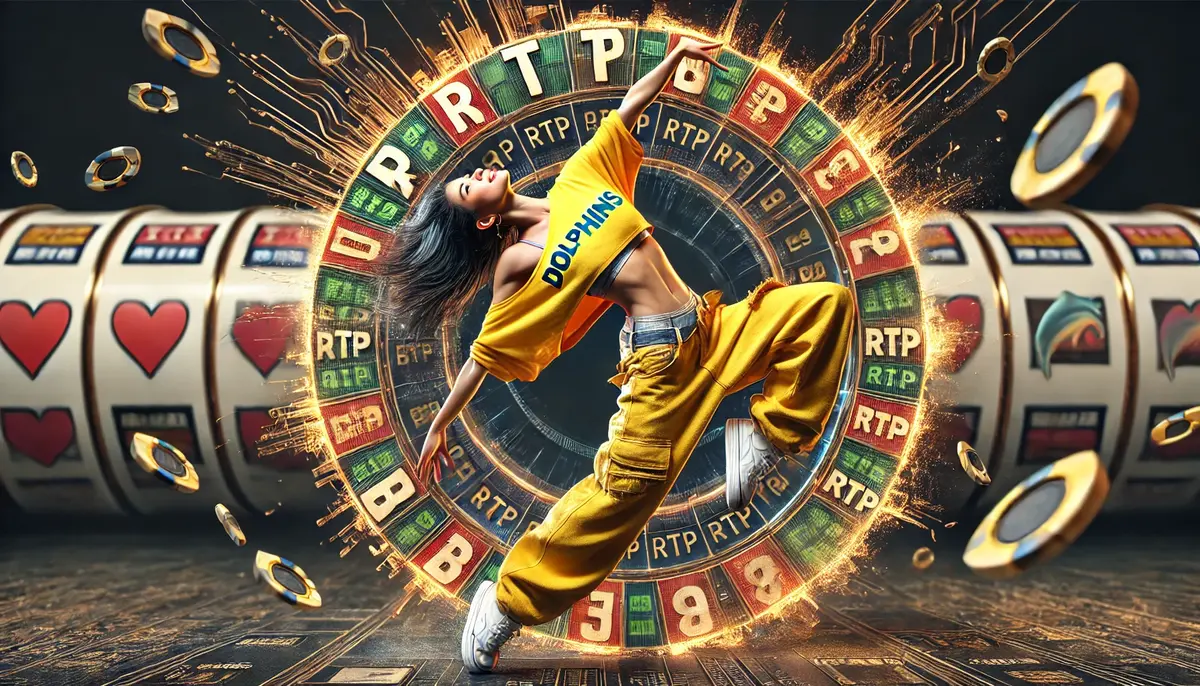Understanding how RTP impacts your gameplay is essential for making informed decisions in slot gaming.
RTP, or Return to Player, is more than just a number—it’s a critical factor that can influence your chances of winning, your overall experience, and even your casino strategy.
This guide will explore the effects of RTP on gameplay, why it matters, and how to use this knowledge to your advantage.
How RTP Impacts Your Gameplay
What Is RTP and Why It Matters
Before diving into the impact, let’s define RTP and its role in slot gaming.
- What Is RTP? RTP stands for Return to Player and represents the percentage of total bets a slot machine is programmed to return to players over time.
For example, an RTP of 96% means that for every $100 wagered, the game will theoretically pay back $96.
How RTP Impacts Gameplay:
- RTP determines the long-term payout efficiency of a slot.
- It provides players with a benchmark to compare games and choose those with better payout potential.
Key Takeaway: RTP doesn’t guarantee individual wins or losses but gives an estimate of how much the slot pays back over extended play.
Learn more: How RTP Works: Understanding the Key to Smarter Casino Gaming
How RTP Impacts Your Slot Choices

The RTP of a slot directly influences your gaming decisions and overall experience.
1. RTP Impacts Your Winning Potential
The higher the RTP, the better the odds of receiving a larger portion of your bets back over time.
High RTP Slots:
- Offer a lower house edge and statistically better chances of winning.
- Typically preferred by players seeking consistent returns.
Example: Hot Hot Fruit by Habanero, with an RTP of 96.74%, provides players with a favorable return and engaging gameplay.
Low RTP Slots:
- Often feature massive jackpots or unique gameplay features but come with a higher house edge.
- Suitable for risk-takers willing to trade frequent wins for a chance at a big payout.
Example: Fortune Dogs by Habanero, with an RTP of 94%, offers exciting gameplay but requires a higher tolerance for risk.
2. RTP Impacts Bankroll Management
RTP plays a significant role in determining how far your bankroll can go.
High RTP Games:
- Better for budget-conscious players as they offer consistent returns.
- Allow for longer gameplay sessions without depleting funds quickly.
Low RTP Games:
- Require a larger bankroll due to higher volatility and longer losing streaks.
How RTP Impacts Your Strategy
Incorporating RTP into your strategy can lead to smarter choices and a more enjoyable gaming experience.
Selecting the Right Games:
- Use RTP as a benchmark to compare different slots and choose those with the highest return percentages.
- Pair RTP with volatility to find games that align with your risk tolerance.
Maximizing Promotions:
- Focus on casino bonuses, such as free spins, tied to high RTP slots.
- Leverage cashback offers to minimize losses in lower RTP games.
Planning Your Sessions:
- For short gaming sessions, opt for high RTP, low-volatility games for steady returns.
- For longer sessions or high-risk strategies, explore high-volatility games with competitive RTP percentages.
Learn more: How to Check RTP on Slots: Maximize Wins or Avoid Losses
Common Misconceptions About RTP
While RTP (Return to Player) is a critical factor in understanding slot gameplay, there are several myths surrounding it that can lead to misunderstandings.
Let’s debunk these misconceptions and clarify how RTP impacts your gaming experience.
Myth 1: High RTP Guarantees Wins
Reality: RTP does not ensure individual wins; it’s a long-term statistical measure.
RTP is calculated over millions of spins, representing the theoretical percentage of wagers returned to players in the long run. It does not account for the randomness of individual sessions, where luck and variance play a significant role.
- Example: A slot with an RTP of 97% doesn’t mean you’ll win $97 for every $100 you bet. In one session, you might lose your entire stake, while in another, you could hit a big win.
- Why This Myth Exists: Players often associate high RTP with guaranteed returns, misunderstanding the statistical nature of the metric.
- Key Takeaway: RTP provides a benchmark for long-term expectations, not a prediction of short-term outcomes.
Myth 2: Low RTP Means Bad Games
Reality: Low RTP games can still be enjoyable and rewarding for certain types of players.
Slots with lower RTP percentages often feature unique elements, such as progressive jackpots, immersive themes, or innovative bonus rounds, which can compensate for the lower payout potential.
Example:
- Fortune Dogs by Habanero has an RTP of 94% but includes exciting features like progressive jackpots that attract players looking for life-changing payouts.
- Progressive jackpot games, in general, tend to have lower RTPs because a portion of each bet contributes to the growing jackpot.
Why This Myth Exists: Players may assume that a lower RTP automatically makes a game less worthwhile, overlooking other aspects like bonus features or the thrill of chasing a big jackpot.
Key Takeaway: A lower RTP doesn’t mean the game is “bad.” It simply means players should adjust their expectations and strategy accordingly.
Myth 3: RTP Is All That Matters
Reality: While RTP is important, it’s just one of many factors that affect gameplay.
RTP is a critical metric, but other elements like volatility, theme, bonus features, and gameplay mechanics play an equally significant role in shaping your experience.
Other Key Factors to Consider:
- Volatility: Determines the frequency and size of payouts. High RTP with high volatility may result in fewer but larger wins.
- Bonus Features: Free spins, multipliers, and interactive bonus rounds can enhance the entertainment value and payout potential.
- Theme and Graphics: A visually appealing game with engaging soundtracks and themes can make gameplay more enjoyable, even if RTP isn’t the highest.
Example:
- Hot Hot Fruit by Habanero, with an RTP of 96.74%, offers exciting bonus rounds and a visually appealing design, creating a well-rounded experience.
- Conversely, a high RTP slot with minimal features or bland themes might not appeal to all players.
Why This Myth Exists: RTP is often highlighted as the most important metric, leading some players to overlook other factors that contribute to an enjoyable and profitable gaming experience.
Key Takeaway: While RTP is a good starting point for evaluating slots, consider the full package—volatility, features, and overall gameplay—when choosing a game.
Debunking these myths about RTP helps clarify how RTP impacts your gameplay.
Understanding that RTP is a long-term measure, appreciating the value of lower RTP games with unique features, and recognizing the importance of other gameplay factors will help you make more informed and balanced decisions.
Keep these insights in mind the next time you choose a slot, and enjoy a smarter, more strategic gaming experience!
Conclusion
Understanding how RTP impacts your gameplay is a critical step in becoming a more strategic slot player.
By recognizing the role of RTP in determining long-term returns, you can find RTP on slot machines that align with your goals, manage your bankroll effectively, and maximize the value of casino promotions.
Use this knowledge to make smarter slot choices and enhance your overall gaming experience. Whether you’re a beginner or an experienced player, knowing how RTP impacts your strategy can make all the difference.




